6 Comments
Alder, the van of warrior bands for thereof are the shields.
Shield of warrior bands. Protector of the heart, the shield. Guarding of milk. Book of Ballymote 1391 Alder fact file Alnus glutinosa (Latin) Fearn (Ogham) Aler (Anglo-Saxon) Elri (Norse) Gwernen (Welsh/Cornish) The Alder can be a large canopy tree up to 70ft high laden with last year’s cones and reddish brown catkins at the same time fringing wetlands with a beautiful spring sight which is perhaps why the Norsemen called March ‘Lenct’ ( to become Lent) which means ‘the lengthening month of the Alder’. Alder is often thought of as a Faerie or Elemental tree, an axis from which the elements flow and form. Water- forms a valuable habitat known as ‘Carr’ supporting much wildlife on wetlands or beside rivers and lakes. Fire- Alder wood does not burn especially well but produces hot charcoal and gunpowder. Earth- The tree roots into the ground fixing nitrogen salts therefore enriching the soil around it. Air- It has ‘Royal’ purple buds, the colour of the Raven and therefore connects the tree to the raven-headed giant Bran who has oracular powers of prophecy and protects the land of Britain from invaders. The wood has also been used to make whistles and pipes. Alder in Lore is considered to be the male counterpart to the Willow as they both preside over our waterways nourishing and supporting this vital system. The male aspect is further enforced in the trees association with warriors. The wood was used to make a shield, and a fiery red dye obtained from the bark called ‘roeim’ (that which reddens the face) may have been used like woad to strike fear into the enemy. In the Welsh triads they speak of crimson stained Warriors of the Alder Cult. Dyes can also be obtained from the flowers (green) and the twigs (brown).The war Goddess the Morrigawn also takes the form of the raven and therefore one could associate her with the Alder. The latin ‘Alnus’ may have been derived from the phrase ‘Alor Amne’- I am nourished by the stream. The tree can be used for healing. The leaves can help relieve weary feet and put into duvets and cushions etc they can be used to give rheumatic relief. The leaves can also be used to tan leather and the bark can be placed on burns and inflammations including the neck if inflamed. Alder wood is not durable unless immersed in water so is an ideal wood for water pipes, troughs, canal lock gates etc. Much of Venice is built on Alder piles and the wood in Britain would have been used as foundations for ‘Crannogs’- round houses built on waterways in ancient times. There are three main woodland types of Alder: Fen- low level ground on floodplains of rivers and streams. Valley- Growing along narrow fringes to streams or climbing flushed slopes especially in Western Britain. Plateau- level uplands often on a watershed. Alder generally will colonize new sites its seeds dispersed by water and to a lesser extent wind. It coppices well. Alder doesn’t like stagnant anaerobic water or severe prolonged flooding but prefers moving oxygenated water and is associated with plants of fertile soil maybe due its nitrogen-fixing properties. In a mixed wood it associates itself with Lime, Birch, Chestnut and Hornbeam growing in soils varying from 3.3ph- 7.3ph. Local name indicators of Alder include Cargate and Carrfell. For more information subscribe to our monthly newsletter HERE Willow, the colour of the lifeless one
owing to the resemblance of its colour to a dead person. Hue of the lifeless. Beginning of loss, willow. Strength of bees. Book of Ballymote 1391 Willow fact file Salix species. Our largest willows are the white and crack willow that can reach 80ft in height. The willow species rather like the whitebeams consists of an array of specialist species some of which only grow in Scotland or in Northern areas of England. The four main tree species are: 1/ Crack Willow (S.fragilis) 2/ White Willow (S.alba) 3/ Bay Willow (S.pentandra) 4/ Almond Willow (S.triandra) The fourteen small tree/shrub species are: 1/ Sallow, Goat Willow (S.caprea) 2/ Grey Willow (S.cinerea) 3/ Purple Willow (S.purpurea) 4/ Common Osier (S.viminalis) 5/ Eared Willow (S.aurita) 6/ Tea-leaved Willow (S.phylicifolia) 7/ Dark-leaved Willow ( S.myrsinifolia) 8/ Creeping Willow ( S.repens) 9/ Downy Willow ( S.lapponum) 10/ Woolly Willow ( S.lanata) 11/ Whortle-leaved Willow ( S.myrsinites ) 12/ Mountain Willow ( S.arbuscula) 13/ Net-leaved Willow ( S.reticulata) 14/ Dwarf Willow ( S.herbacea) Celtic traditions sometimes encouraged trees to be planted at burial sites so the spirit of the corpse can rise into the sapling above, willow probably being a preferred choice as it is said to ease the passage of the soul at death. To wear willow is to grieve openly and the tree I suspect encourages us to be open to our deeper emotions. Witches brooms may be bound with willow to dedicate the broom to the goddess and the moon. Its leaves, bark and wood maybe be burnt as incense for similar reasons. Celtic lore speaks of willow connected to in-between states and otherworld experiences. Her connection with water enhances that as water represents that more fluid otherworldly state, the cycle of life and death and returning to the source. Gypsies cut willow on Green George day (23rd April) to propitiate water spirits, bless the crops, herds,pregnant women and heal the the sick or needy. As a provider of early nectar the tree is associated with bees who the Celts regarded as perfect examples of community life all working together to achieve their goals, and as beings from the Other-lands. The Sumerian goddess Belili rules over the moon, love and the underworld and therefore is connected to willow as are other powerful goddess archetypes such as Hecate and Cerridwen. Women were warriors and leaders in Celtic Society and often trained the young men in battle. The old adage of the Willow bending in the wind rather than resisting it comes to mind as we recognise the power of the feminine source. Willow is a great medicinal healer containing Salicylic acid the main ingredient in asprin. Its leaves and especially its bark can be used to ease rheumatism, headaches and other inflammations in the body. Its wood is light and tough and has been used for rafters and floors and a certain white willow species for cricket bats. The stems/branches are strong and very flexible making them ideal for weaving baskets, hats and making coracles. To learn more subscribe to our free monthly newsletter each month with positive, inspiring articles and poetry HERE You may also which to learn more about our Native Tree Course HERE
Qualities of Dandelion Common Name: Dandelion Latin : Taraxacum officinale Family: Asteraceae (compositae) History and/or use: Roast roots for a beverage and use leaves for salad. Effective blood purifier. Wildlife Value: Key nectar source. The classic folk tale of the Dandelion is of the Leprechaun who hides its gold under the plant. The question therefore is what is the gold in the soil, where do the dandelion roots stretch down to? Dandelion is the quality of connection, it provides one of the early main sources of nectar for our winged delights, its golden flower attracts the nectar seeking insect people. John Muir describes our insects as beautiful winged people waltzing together in pure play and hilarious enjoyment. The gold under the plant is the very essence of life, the soil and minerals and the insects and fungi from which all life stems from. No matter how hard our lives may seem the dandelion implores us to find the gold in the earth and treasure it more than ever! Here's the dandelion rhyme: see my leaves with tooth-like edges, blow my clocks to tell the time, see me flaunting by the hedges, in the meadow, in the lane, pull me up- I grow again. Asking neither leave nor pardon, sillies, what are you about with your spades and hoes of iron? You can never drive me out- me, the dauntless dandelion! Cicely Mary Barker 1925 If you have any medical conditions please check with a medical herbalist first before taking any plant and only harvest it if you are 100% sure what it is! The word dandelion is a corruption of the French ‘dent de lion’ which means ‘lions tooth’ referring to the shape of the leaf. Dandelion is yet another common plant which is underrated. In medieval times it was grown as a vegetable and cooked like spinach or it was added to salads. It is rich in vitamins A and C and is a superior diuretic as it replaces the potassium lost in the process. The leaves are also a strong equivalent to frusemide and can be used for hypertension when dried. The root can also be used as a vegetable sautéed in vegetable oil and is a powerful liver tonic and coffee substitute. Use the root dried or fresh. To make coffee dig up your fresh roots, wash and dry them, then bake in the oven for about ten minutes on a low heat. Provided they are not burnt they taste delicious, just add hot water and according to preference some fresh milk. If you wish to do it over an open fire chop the root up small and flash fry them with no oil. If you would like to support our work and go even more deeply into Nature Connection please become a member and have exclusive access to our online course. Burdock (Arctium Lappa/minus)
Common Name: Greater Burdock Latin: Arctium Lappa Family: Asteraceae History and/or use: Effective blood purifier. Edible shoots and roots. Wildlife Value: Good nectar source for insects including painted lady and small tortoiseshell butterflies Qualities of Burdock 'Man must be made conscious of his origin as a child of Nature. Brought into right relationship with the wilderness he would see that he was not a separate entity endowed with a divine right to subdue his fellow creatures and destroy the common heritage, but rather an integral part of a harmonious whole. He would see that his appropriation of earth's resources beyond his personal needs would only bring imbalance and beget ultimate loss and poverty for all. ' John Muir 1911 The burdock stretches down into the earth bringing up goodness and sustenance, purifying our bodies and growing into a large foliage plant often called 'wild rhubarb'. Still in Edinburgh the spirit of this indomitable plant is honoured. A man dresses from head to toe in its burrs known as the Burry Man and is offered whisky and money to keep the town safe. The origins of this custom are lost, however in tribes all across the world people dress up as the spirits of plants and nature to be honoured and appeased. I feel Burdock asks us to be fearless for to feel the grief of our loss of the natural world and still hold steady and continue to do what is right, remaining positive and at ease where there is suffering is a gift we can offer to the world, a gift which involves honouring the spirit of all nature: Wee little hooks on each brown little bur, (Mind where you’re going, O Madam and Sir!) How they will cling to your skirt-hem and stocking! Hear how the Burdock is laughing and mocking: Try to get rid of me, try as you will, Shake me and scold me, I'll stick to you still, I'll stick to you still! Cicely Mary Barker 1925 Burdock as already mentioned has a deep root that can be eaten fresh or dried as a blood purifier. In fact it is considered one of the finest and most effective blood purifiers in the medical herbal world working with the kidneys to filter out all the impurities from the blood. If you have any medical conditions please check with a medical herbalist first before taking any plant and only harvest it if you are 100% sure what it is! The fresh leaves can be applied to ulcers and sores as they are cooling and moderately drying. As food the young stalks can be peeled and chopped to add to a meat broth or eaten with melted butter. The root as already mentioned can also be eaten by chopping it into rings and frying it. The sticky bur- like buds are very abrasive to the skin and have been named bachelor or sticky buttons. If you would like to support our work and go even more deeply into Nature Connection please become a member and have exclusive access to our online course. Rowan Tree ( Sorbus aucuparia)
Delight of the eye is mountain ash, owing to the beauty of its berries. Delight of the eye. Strength or friend of cattle, the Elm. Strength of cattle. Book of Ballymote 1391 Rowan Fact File. Luis (Ogham name).Caorann (Gaelic). Rowan, like birch, was early in succession from the last ice age and is also most common in the highlands of Scotland; in fact the commonest tree except birch. Rowan is often confined to poor acid soils in Eastern England and is probably a naturalised species in southerly regions. Its berries are a food source for many birds connecting it to the musical spheres as well as a poetic muse for poets. The Sorbus family (see whitebeam blog) to which rowan belongs is an interesting collection of trees including the whitty pear (Sorbus domestica), Britain’s rarest tree. The more common whitebeam is a delightful tree growing more usually on limestone and chalk soils. The Wild Service-tree (Sorbus torminalis) has distinctive triangular lobed leaves and has a thin distribution across England as far north as the Lake District. The latter tree has been identified from charcoal from the late Iron Age and is often known as the Chequer Tree producing fruit which if left to go ‘sleepy’ (rather like medlars) can be used in home brewing. Rowan is steeped in ancient lore and medieval superstitions. Rowan may be a derivative of runa, a word meaning charm or spell and certainly has a strong connection with witches. Witches have used it to protect and work magic often with respect for it is said if they are touched by the tree the devil will consume them! The berries were said to induce altered states, and spells were said to be written on rowan staves. Older references also focus on its magical properties and it has a certain sinister reputation in the ancient legends, such as when meat is offered on rowan spits both to Finn MacColl by phantoms and to Cuchulainn, (famous Irish warrior), by the Morrigawn. There is an ancient magical ritual mentioned in old texts called ‘Tarbh Fheis’ which involves sleeping on a bed of woven rowan twigs to induce a magical trance in order to gain hidden knowledge. Rowan has been used for protection in the form of an equal-armed cross or by simply carrying the berries or wood with you at night especially at Midsummer to stop you being transported to the faerie realms. The tree can be planted instead of standing stones to guard earth energies. There is said to be a rowan guarded by the giant Searbhan Lochannoch called the Tree of Dubrois and it is said to transform a person of 100 years old to one 30 years old. Luis means ‘swarm’ or ‘great many’ which may refer to warriors and huntsmen who gather under the rowan as described in literature about the Tree of Clonfert and the Wry Rowan. The rowan has a strong connection with archetypal Goddesses especially Bridget and Brigantia both who preside over water cults, pastoral people, flocks and herds, connecting rowan to the green world and the lord of the hunt and cattle, which were key providers for the Celtic people. A female Druid, Dreco carried a magical rowan spear. Her grandfather was a Druid called Carton whose name is probably a corruption of the Gaelic word Caerthann which means rowan. Medicinally rowan’s bark is used for treating diarrhoea and its berries are used for sore throats. A delicious syrup can be made with rowan berries and crab apples. Learn more by subscribing to our monthly newsletter here. Foxglove. Digitalis purpurea.
“ Foxglove, foxglove, what do you see?” The cool green woodland, the fat velvet bee; hey Mr bumble, I've honey here for thee! Foxglove, foxglove, what do you see now?” The soft summer moonlight on bracken, grass ,and bough; and all the fairies dancing as only they know how. Cicely Mary Barker In woodland ecology terms the foxglove is known as a ‘shade evader’ waiting for a clearing in the woods for its seeds to germinate and it then causes an eruption of colour from its tall single stem. A stately plant common in our British woodlands. Foxglove has a deadly reputation, its reckless usage leading to illness, children’s deaths and even the death of geese which led the people of Orkney to shun its use for human ailments. This terrible reputation didn’t just stop at herbal usage. It was noted a Staffordshire man in the summer of 1914 remarked that the foxgloves he saw looked like soldiers and would bring about war! A procession of foxgloves in Hartland, North Devon is still held in memory of St Nectan. who when killed by robbers left a trail of blood from which foxgloves sprang up from. Maybe this caution of foxgloves continues in folk lore due to its associations with faeries. The word ‘glove’ may be derived from the Anglo Saxon word ‘gliew’ which is a musical instrument with small bells and the word ‘fox’ may mean ‘folk’ or ‘the little folk’ leading to other names such as fairy bells or fairy thimble. Such a delightful looking plant attracts the little folk in the form of children who inflate the flower and burst it giving the plant the name pop dock. If a wasting illness is affecting someone a bath of foxglove is recommended as a faerie cure. Some may have taken the plant to promote intoxication which may well result in them visiting the realms of faeries. Bells traditionally have magical properties and create altered states enhancing a further connection with foxglove’s reputation with the magical realms. Despite all these connections with faeries and death it still is a plant that has been used extensively in folk tradition as an all purpose salve, a cure for tuberculosis, coughs, colds and sore throats as well as a disinfectant and remover of pests such as rodents and insects in the house. It has also been used as a fresh poultice for wounds. It is widely used and most known for its diuretic ability and especially its ability to slow the pulse and save people from heart failure. This use which is widely applied in the medical world today has been credited to William Withering who actually learnt of this plant through the many herbalists before him. He was most impressed when the medical herbalist Mrs Hutton cured a patient of heart failure after college physicians had failed. Today the chemical digitalis derived from foxglove is one of the leading cardiac drugs whilst modern herbalists do not use the actual plant anymore. However although I am in no position to recommend its use there are many old recipes from herbalists and Irish Medieval monks who used it extensively. They would have prescribed it in such a way that it treated the patient as a whole therefore reducing the risk of its toxicity. Current research is pointing to the modern synthetic version of digitalis to be more toxic than the original plant. Sign up for a monthly newsletter to learn more here. |
Details
Poetry of flowersJoin me to explore the flora of the British Isles on this blog. My intention is to attempt to capture the unique quality and beauty of each species of flower, tree or shrub. For every species featured I will be growing many more wildflowers to celebrate the joy of their existence, their intrinsic conservation value and bewildering array of uses. For nearly 30 years I have noted, studied and explored wildflowers in the field much to the patience of the walker beside me. To share this passion is a heartfelt plea to respect, preserve and care for all British Wildflowers no matter how common they seem. Archives
February 2024
Categories |


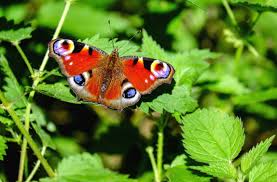
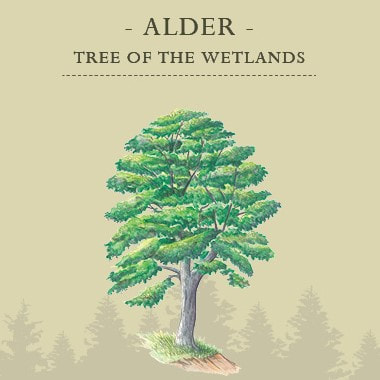
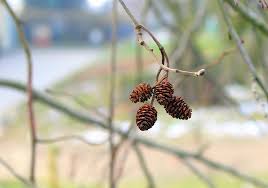



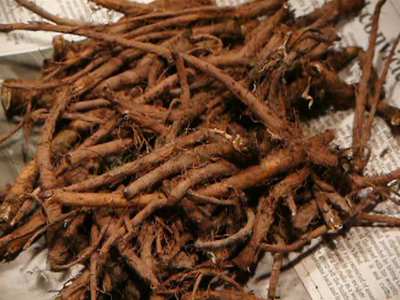


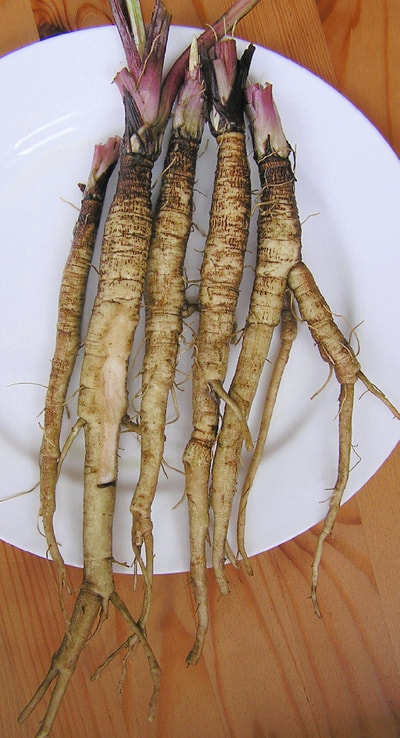

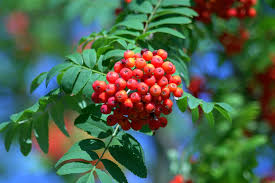

 RSS Feed
RSS Feed
